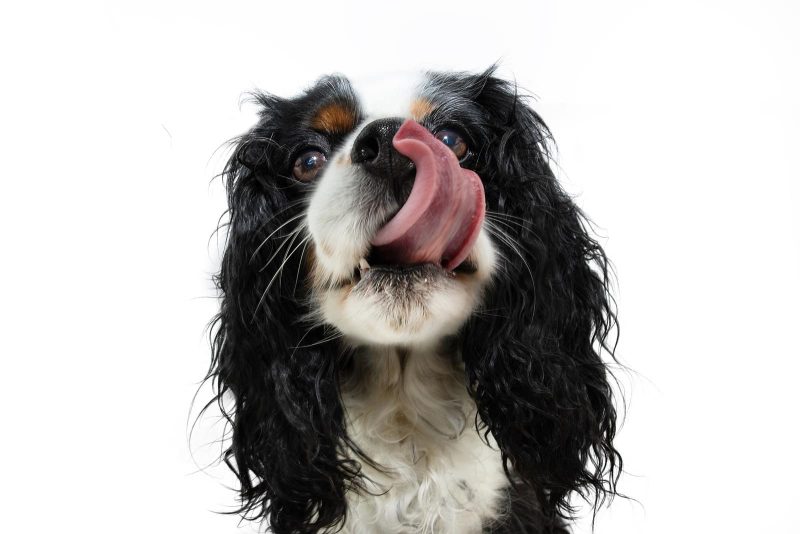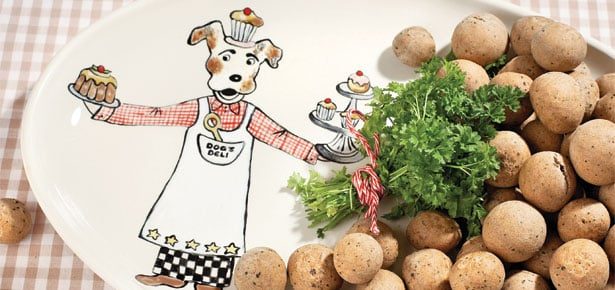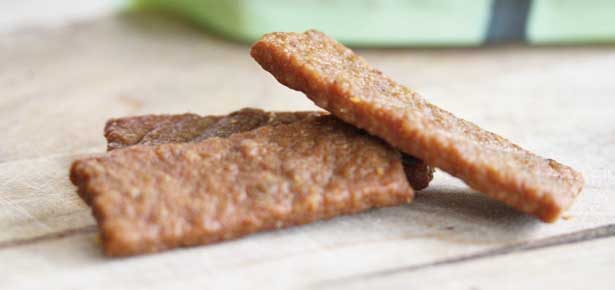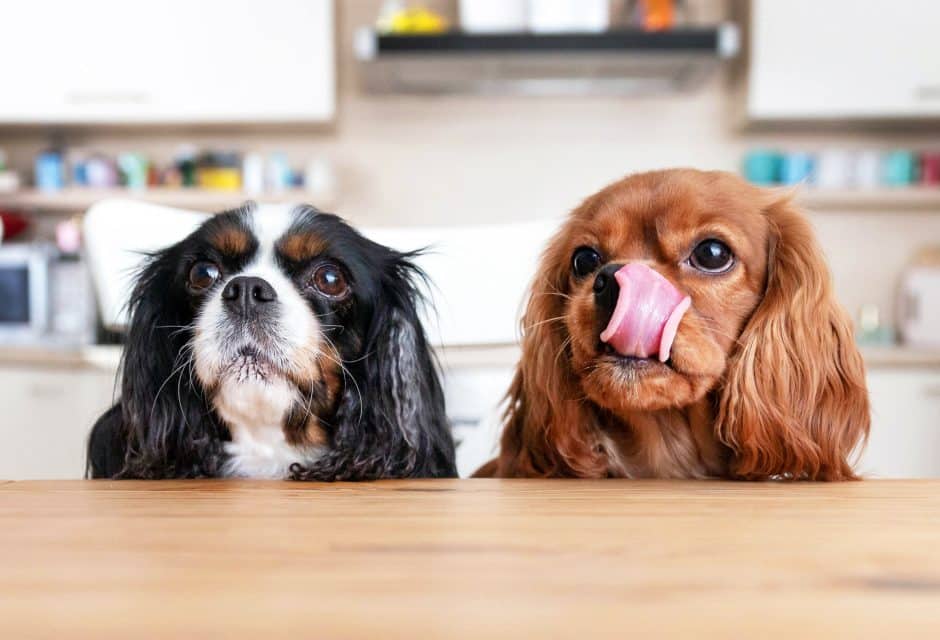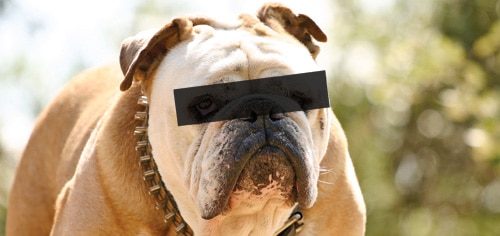
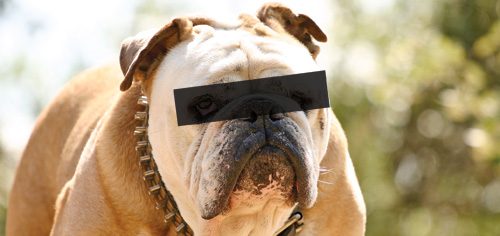
Overeaters Anonymous
The biggest canine loser
Canine obesity is the most common nutritional problem seen in vet clinics in North America. In North America, it is estimated that 30 percent of adult dogs are overweight. Any breed of dog can become overweight but it is most commonly seen in Labrador Retrievers, Golden Retrievers, Beagles, and Pugs. In today’s society, it is easy to let ourselves get overweight and, as a result, we are letting our dogs get fat as well. A sedentary lifestyle and a climate that is not always conducive to outdoor activity can result in an increase in weight for our dogs.
Being obese for a long period of time predisposes your dog to joint disease, respiratory disease, pancreatitis, diabetes, skin disease, cancers and heart problems. Even allowing your dog to be a little bit overweight can cause a reduction in life span. A study done by Purina found that dogs that were considered moderately overweight (not obese) for their lifetime had a 15 percent reduction in life span. In short, overweight and obese dogs die younger. Similar issues are seen in people who are overweight throughout their lifetime.
How can I tell if my dog is overweight?
You can’t always tell if a dog is overweight just by looking at the dog. You really need to get your hands on the dog and have a good feel of ribs, shoulders, hips, and spine. This is especially true for dogs with thick, fluffy coats; their coats can easily hide their true “figure.” The easiest way to assess your dog’s weight is with a “rib check” or body condition score (BCS). When you put your hands on your dog’s sides, you should be able to feel her ribs easily—you shouldn’t have to dig for them. In a side view, you should be able to see her waist clearly and, when looking down on your dog from above, you should see an hourglass figure. You can do a BCS on your dog using the set of diagrams on the following page and the list of questions below.
- Can you feel your dog’s ribs easily?
- Can you feel the top of your dog’s shoulder blades?
- Can you see the last rib in your dog?
- Can you feel your dog’s spine but not see it?
- Can you feel your dog’s hip bones but not see them?
- Does your dog have an hourglass figure?
- Does your dog have a waist when you look at the side view?
If your answered “NO” to more than one of the questions, your pooch could probably lose a little weight.
How many extra pounds are okay?
We tend to think in pounds when we think of obesity, but the number of extra pounds that would be considered obese would depend on the size of the dog. Obesity occurs when a dog weighs more then 10 to 15 percent above his ideal or fit body weight. For example, a Chihuahua that should weigh 5 pounds (2.3 kg) will be obese if he carries an extra half pound (227 g), while a Labrador Retriever who should weigh 66 pounds (30 kg) might not be obese until he weighs more than 73 pounds (33 kg), or 7 pounds (3 kg) over his ideal body weight. The table on the following page lists obese weights for various sizes of dogs.
Body weight by itself is not considered a 100 percent reliable indicator because dogs can vary greatly within a breed and the height and size of frame will also play a role in determining whether a dog is overweight. One of the most frequent comments we hear is that “my dog is not overweight, he’s just big-boned.” A dog can be big-boned and have a good BCS, including a tucked waist.
What causes canine obesity?
While there are medical conditions such as hypothyroidism that can cause your dog to gain weight, the most usual cause for obesity in dogs is too much food and not enough exercise. If your dog suddenly starts putting on the pounds, or if you’ve reduced his food and he’s having trouble losing weight, you definitely want to talk to your veterinarian.
Most pet dogs lead a fairly sedentary lifestyle. A leisurely walk around the neighbourhood does not provide a lot of calorie-burning exercise. Because of this, it’s important that the food your dog is getting doesn’t exceed his needs.
Most pet dogs lead a fairly sedentary lifestyle. A leisurely walk around the neighbourhood does not provide a lot of calorie-burning exercise. Because of this, it’s important that the food your dog is getting doesn’t exceed his needs.
If you are adding lots of extras on top of your dog’s normal ration, the calories from those treats can add up quickly. A large Milk-Bone biscuit has 120 calories, which is more than 10 percent of the daily requirement for a 75-pound (34-kg) dog. A teaspoon of oil (such as salmon oil) contains 40 calories; that’s about 25 percent of the daily requirement for a 5-pound (2.27-kg) dog.

How can I introduce a weight-loss regime?
Once you have determined your dog’s current weight and BCS, you will have a good idea of how much weight she needs to lose. If your dog needs to lose 10 percent of her weight or less, you should be able to achieve this through some simple lifestyle changes. If your dog needs to lose more than 10 percent of her weight, you should work with your veterinarian to ensure you are following a safe weight-loss program.
The next step is to determine how many calories your dog is eating. Check out the package of the dog food you are using and calculate how many calories your dog gets daily. Commercial kibbles range from about 300 kcal/cup to over 500 kcal/cup. The more calorie-dense the food, the less you’ll need to feed. Keep a food diary for a couple of days, if you need to, and write down everything your dog is eating. Make sure everyone in the house participates. Once you know what your dog is normally eating, you can figure out where to make the cuts. First reduce the amount of treats being given, and then, if you still need to cut calories, reduce your dog’s daily food by about 10 percent. The goal is for your dog to lose about 1 to 2 percent of her body weight per week. For a 75-pound (34-kg) dog, this would mean losing 12 ounces to 1.5 pounds (340 to 680 g) per week. For a 10-pound (4.5-kg) dog, you are aiming for a loss of 1.5 to 3 ounces (45 to 90 g) per week. At this rate it will take 8 to 12 months for your dog to reach his ideal weight. But slow and steady weight loss means that your dog won’t be too hungry and that you’re changing to a lifestyle that you can continue.
Make sure you are using a measuring cup to measure out your dog’s food; it’s easy to feed a bit too much if you’re just eye-balling the level in the bowl. It can also help weight loss to switch to feeding two meals per day if you aren’t already doing so. This can help your dog feel fuller and gives you a better idea of exactly how much he is eating.
If your dog tries to convince you that he is starving on this new regime, you can try adding a small amount (a couple of tablespoons for a medium dog, less for a smaller dog) of canned pumpkin (not pie filling!) or green beans (unsalted). Since these are a source of extra fibre, you may want to introduce them slowly to make sure they agree with your dog’s gut.
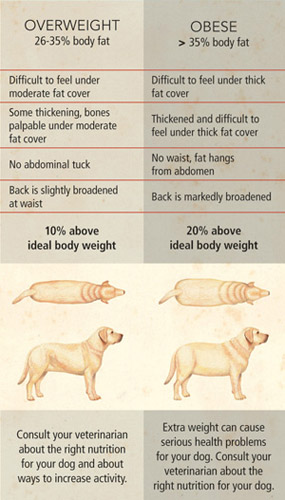
Another low-calorie but very filling treat is air-popped popcorn. Smaller dogs can have a couple of pieces; larger dogs can have up to a cup. Just make sure you skip the butter and salt on your dog’s portion.
Most dogs are able to lose weight by just reducing the amount of regular food they eat. While there are a number of diet dog foods available, cutting back on regular food is usually sufficient. The feeding guidelines on commercial dog foods are just that, guidelines. Your dog may need a bit more or a bit less than what the bag recommends. In our experience, a larger breed dog such as a Labrador Retriever can typically maintain a healthy weight on about 2 cups of kibble per day. Some breeds, such as German Shepherd Dogs, would need a bit more food for the same size dog.
Keep an eye on your dog’s body condition and adjust her food to meet her own unique needs.
What about exercise?
Dogs need exercise to keep both their minds and bodies in shape. To keep your dog’s exercise regime interesting for both you and him, here are a few tips.
- Vary your route. Take a different route through the neighbourhood or go the opposite direction than you normally do.
- Try out a new trail. Ask around or check out your town’s website for information on dog-friendly trails. The fall is an excellent time to check out some new scenery.
- Bring a friend. Invite one of your dog’s friends (and her owner!) over for a playdate in the yard or meet up at an off-leash park. Dog play is a great way to get exercise and lots of fun to watch.
- Don’t let the weather stop you. Even if it’s not a perfect day, you and your dog can still get out for some exercise. Dress appropriately and, once you’re out there, you may find it’s not as bad as you expected.
- Exercise indoors. If you can’t get out, find games that are safe to play in your house. If you have room, your dog can play fetch, you can send him up and down the stairs, play hide and seek, or practice calling him to you from different rooms in the house. If you live in an apartment building, you can even go for a walk indoors and visit a few different floors.
- Take her swimming. Check out taking your dog to a dog swimming pool if she is older and has arthritis.
- Consider getting a dog walker. A dog walker once or twice a week can be a good option if you have a hard time getting your dog out for long walks.
-
Swap duties. If you and a friend both have dogs, take turns walking both dogs. Less work for you, and your dog gets to walk with a friend.
Join the newsletter and never miss out on dog content again!
"*" indicates required fields
By clicking the arrow, you agree to our web Terms of Use and Privacy & Cookie Policy. Easy unsubscribe links are provided in every email.
